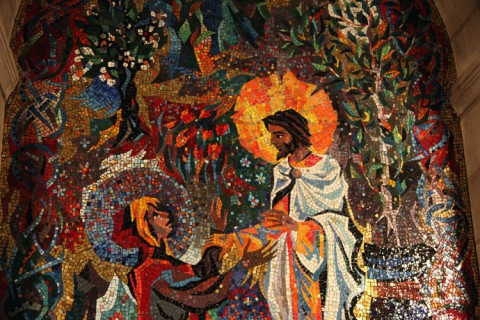Easter Sunday, April 8, 2012: John 20:1–18
The risen Christ does not rebuke Mary for her error. He seems rather to enjoy the occasion of her surprise.

John's telling of the encounter of Mary Magdalene with the risen Christ is striking for its narrative perspective. This might seem to be among its less remarkable features to most readers, but a writer reads a story differently than other people do, noticing technique and workmanship the way any artisan will consider a product of her craft—the mystery of it, as they said in the Middle Ages. And the way in which a story is told, its angle of vision, has everything to do with what it means, and is therefore a matter of great interest to anyone who is attentive to the art of narrative.
The accounts of the resurrection famously differ from one Gospel to the next, and this fact enhances the interest of an element they share, the skepticism of the earliest witnesses. Mary Magdalene, when she finds the tomb empty, simply assumes someone has carried the body away, perhaps the gardener she does not recognize as Jesus. Others of his followers do not recognize him when he is among them, in large part because they believe he is, in the way of mortals, dead and gone. In every case the angle of vision is a skepticism based on the expectation that with Jesus' death things will have taken their ordinary course. In other words, this-worldliness is foregrounded, even while the events themselves are nothing less than the grandest of theophanies.
Peter and the other disciples run to see the empty tomb when they are told of it, but apparently draw no conclusions—"Then the disciples went back to their homes." Even after Mary has spoken with angels, she explains the body's absence to herself in just the way any rationalist might do, not even pausing to wonder. And Thomas is the ultimate empiricist in his insistence that he must touch Christ's wounds. It is clear from the metaphysics of the prologue that John's Christ might have appeared to his followers as an effulgence of holy light. Instead, as he does appear to them, he might be any man tending a fire at the shore, any stranger urged to share supper. The realism of the expectations of each of his witnesses establishes for the reader the way in which Jesus was known to them, as a much revered, much beloved and very mortal man, the last an impression the crucifixion would seem to have confirmed.





